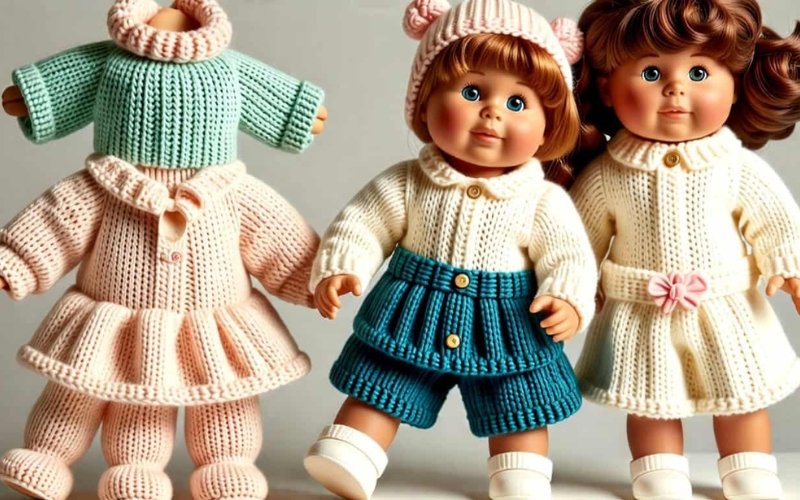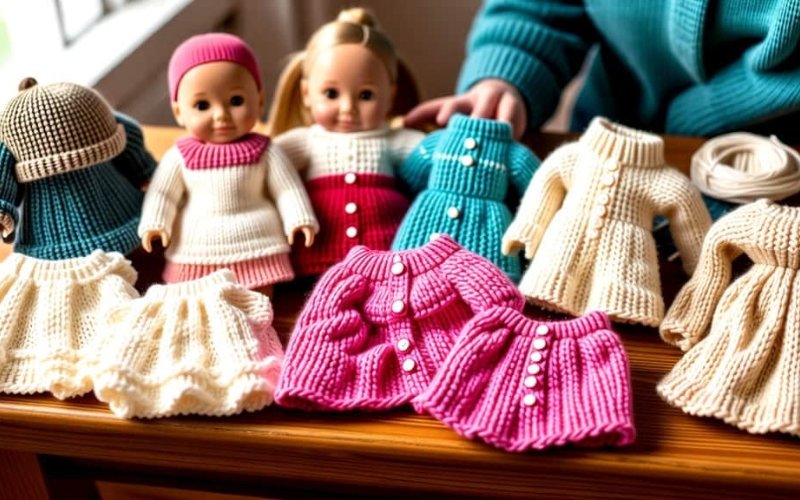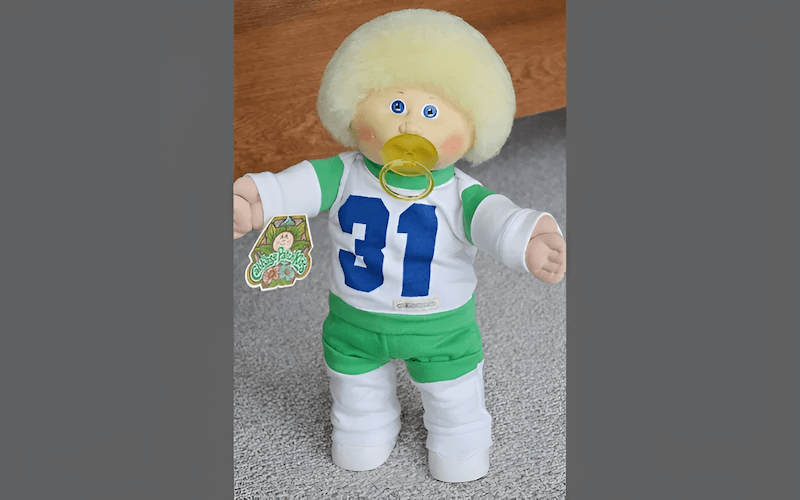Cabbage Patch Doll Clothes Patterns: Easy Sewing!
If you’re a clothing business owner venturing into the charming world of doll apparel, or perhaps looking to expand your existing product line, you’ve likely encountered the enduring appeal of Cabbage Patch Kids. These iconic dolls, with their unique features and nostalgic charm, present a fantastic opportunity for creating and selling custom-made clothing. This guide will provide invaluable insights into the world of Cabbage Patch doll clothes patterns, covering everything from understanding doll sizes and choosing the right fabrics to selecting appropriate patterns and even exploring different printing technologies for your labels.
Through this article, you’ll gain a comprehensive understanding of:
- Doll Sizing: Deciphering the various Cabbage Patch doll sizes and how to ensure a perfect fit for your garments.
- Pattern Selection: Discovering the vast array of available patterns, from classic designs to trendy, modern styles.
- Fabric Choices: Learning about the best fabrics to use for durability, washability, and overall aesthetic appeal.
- Labeling and Branding: Exploring options for adding professional, high-quality labels and tags to your creations, enhancing your brand’s image and perceived value.
- Expert advice: There are many useful tips from experts to help you get the most effective start.
Whether you’re targeting online sales or supplying boutiques, mastering the art of Cabbage Patch doll clothing can be a rewarding and profitable endeavor.
1. What size clothes fit a cabbage patch doll?
One of the first, and most crucial, steps in creating Cabbage Patch doll clothes is understanding the doll’s size. Unlike some standardized dolls, Cabbage Patch Kids have come in a variety of sizes over the years. Incorrectly sized clothing can lead to customer dissatisfaction and returns, so accuracy is paramount.
The most common sizes you’ll encounter are the 16-inch and 14-inch dolls. These are often referred to as the “standard” or “traditional” size Cabbage Patch Kids. However, there are also smaller versions, like the 11-inch “Lil’ Sprouts” and even larger, vintage dolls that can reach up to 18 inches or more.
Here’s a breakdown to help you:
- Vintage Dolls (Pre-1990s): These can vary significantly. Always measure the specific doll if possible. Key measurements include chest circumference, waist circumference, arm length (from shoulder to wrist), and inseam (for pants).
- Standard/Traditional (1990s-Present): Typically, 14-inch and 16-inch dolls are the most common. However, even within these sizes, slight variations can exist between different production years and manufacturers (e.g., Coleco, Hasbro, Mattel).
- Lil’ routs/Newborns: These smaller dolls (around 9-12 inches) require significantly different patterns.
Pro Tip: When selling online, always include a size chart in your product descriptions. Provide measurements for chest, waist, hips (if applicable), and length. This helps customers make informed decisions and reduces the likelihood of returns. Encourage customers to measure their doll if they are unsure of its size. A simple diagram showing how to measure the doll can be incredibly helpful.
It would be best if you had a sample of each doll size you plan to create clothing for. This allows for test fittings throughout the design and production process, ensuring a perfect fit.

2. Types of cabbage patch doll clothes patterns
The world of Cabbage Patch doll clothes patterns is incredibly diverse, offering a wide range of styles to suit every taste and skill level. Understanding the different types of patterns available is key to choosing the right ones for your business and target audience. Patterns can be broadly categorized as follows:
1. By Garment Type:
- Dresses: These are arguably the most popular category, ranging from simple sundresses to elaborate party gowns and even wedding dresses. Consider offering a variety of sleeve lengths (sleeveless, short-sleeved, long-sleeved) and skirt styles (A-line, gathered, tiered).
- Tops & Bottoms: This includes t-shirts, blouses, sweaters, pants, shorts, skirts, and leggings. Mix-and-match sets are always a popular option.
- Outerwear: Coats, jackets, and even raincoats can be designed for colder climates or to create complete outfits.
- Sleepwear: Pajamas, nightgowns, and robes are a cozy and comfortable option.
- Costumes: Halloween costumes, themed outfits (like fairies, princesses, or superheroes), and holiday attire can be highly sought after.
- Accessories: Hats, scarves, shoes, bags, and even doll diapers add extra play value and allow for upselling.

2. By Skill Level:
- Beginner: These patterns typically feature simple shapes, minimal pieces, and easy-to-follow instructions. Straight seams and basic construction techniques are common.
- Intermediate: These patterns may introduce more complex techniques like setting in sleeves, adding collars, or working with zippers or buttons.
- Advanced: These patterns are for experienced sewers and may involve intricate details, tailoring, or working with challenging fabrics.
3. By Source:
- Commercial Patterns: Companies like Simplicity, McCall’s, and Butterick (as mentioned in your reference materials) offer professionally drafted patterns. These are generally reliable and come with detailed instructions.
- Independent Pattern Designers: Many talented designers sell their patterns online through platforms like Etsy or their own websites. These patterns often offer unique and modern styles. Example: Rosie’s Doll Clothes Patterns.
- Free Patterns: Some websites and blogs offer free Cabbage Patch doll clothes patterns. While these can be a good starting point, always check the quality and accuracy of the pattern before using it for commercial purposes. Sewsimplehome is a great example.
- Self-Drafted Patterns: Self-drafted patterns are worth considering if you want to create a unique style for your brand. Although this approach is more challenging and requires specialized knowledge, it offers significant advantages
Pro Tip: When choosing patterns, consider the current fashion trends for children’s clothing. Adapting popular styles for dolls can increase the appeal of your products.
3. Fabric choices for cabbage patch doll clothes
Choosing the right fabric is crucial for creating Cabbage Patch doll clothes that are not only visually appealing but also durable, washable, and safe for children. The fabric you select will impact the garment’s drape, feel, and overall longevity. Here’s a breakdown of suitable fabric options:
1. Cotton and Cotton Blends:
Pros: Cotton is a natural fiber that’s soft, breathable, and generally hypoallergenic. It’s easy to sew, washes well, and comes in a vast array of colors and prints. Cotton blends (e.g., cotton/polyester) offer increased wrinkle resistance and durability.
Cons: 100% cotton can wrinkle easily and may shrink slightly after washing.
Types: Consider quilting cotton, broadcloth, poplin, flannel (for sleepwear), and lightweight denim.
2. Knit Fabrics:
Pros: Knits are stretchy and comfortable, making them ideal for doll clothes that need to be easily put on and taken off. They also tend to drape well.
Cons: Knits can be more challenging to sew than wovens, requiring a ballpoint needle and a stretch stitch (or a serger).
Types: Jersey knit, interlock knit, and rib knit are all good choices. Look for knits with good recovery (meaning they bounce back to their original shape after stretching).
3. Fleece and Minky:
Pros: These soft, plush fabrics are perfect for creating cozy outerwear, blankets, or stuffed animals.
Cons: Fleece can be bulky and may not be suitable for intricate designs. Minky can be slippery to sew.
Types: Polar fleece, anti-pill fleece, and cuddle minky are popular options.

4. Specialty Fabrics (Use with Caution):
Satin, Silk, Velvet: These luxurious fabrics can be used for special occasion garments like party dresses or costumes. However, they can be more difficult to sew and may require special care.
Lace and Tulle: These delicate fabrics can add a touch of elegance to dresses and accessories. Use them sparingly and ensure they are securely attached.
Fabric Considerations:
- Washability: Choose fabrics that can be machine washed and dried, as doll clothes are likely to get dirty.
- Durability: Doll clothes are often subjected to rough play, so select fabrics that can withstand wear and tear.
- Safety: Avoid fabrics with small embellishments that could detach and pose a choking hazard. Always use non-toxic dyes and finishes.
- Print Scale: Pay attention to the scale of the print. Large prints can overwhelm a small doll, while tiny prints may get lost.
- Stretch: for clothes that are difficult to put on, such as long-sleeved clothes and pants, you should choose fabrics with good stretch.
Pro Tip: Pre-wash and dry your fabrics before cutting and sewing. This will prevent shrinkage and ensure that the finished garment retains its shape after washing. Also help remove dirt, chemicals that may be harmful to health.
4. Printing Technologies for Labels and Tags
Adding professional labels and tags to your Cabbage Patch doll clothes elevates your brand, provides essential care information, and enhances the perceived value of your products. Several printing technologies are available, each with its own advantages and disadvantages. Choosing the right one depends on your budget, production volume, and desired aesthetic.
1. Fabric Labels (Sew-in or Iron-on):
Sew-in Labels: These are typically made of woven fabric (like cotton, satin, or polyester) and are sewn directly into the garment’s seam. They are very durable and can withstand repeated washing.
Printing Methods:
- Woven Labels: The design is woven directly into the fabric, creating a high-quality, long-lasting label. Ideal for brand names and logos.
- Printed Fabric Labels: The design is printed onto the fabric using various methods (see below). Suitable for care instructions, size information, and more detailed designs.
Iron-on Labels: These are made of a heat-transfer material and are applied to the garment using an iron. They are quicker to apply than sew-in labels but may be less durable.
- Printing Methods: Typically use heat-transfer printing (see below).

2. Heat Transfer Printing:
Process: A design is printed onto a special transfer paper, which is then applied to the fabric using heat and pressure. The ink is transferred from the paper to the fabric.
Pros: Relatively inexpensive, suitable for small to medium production runs, allows for full-color printing and intricate designs.
Cons: Can be less durable than woven labels, may crack or fade over time, not ideal for very textured fabrics.
Types:
- Vinyl Heat Transfer: Uses a thin vinyl material for a durable, slightly raised print.
- Digital Heat Transfer: Uses a digital printer to create full-color, photo-quality transfers.
3. Direct-to-Garment (DTG) Printing:
Process: A specialized inkjet printer prints directly onto the fabric, similar to printing on paper.
Pros: Excellent for full-color, highly detailed designs, soft hand feel (the print feels like part of the fabric), suitable for small to medium production runs.
Cons: More expensive than heat transfer, best suited for cotton and cotton-blend fabrics, may not be as vibrant on dark-colored fabrics.
4. Screen Printing:
Process: Ink is forced through a mesh screen onto the fabric, creating a stencil-like print. Each color requires a separate screen.
Pros: Very durable, vibrant colors, cost-effective for large production runs.
Cons: Not ideal for small runs or designs with many colors, setup costs can be high.
5. Pad Printing:
Process: Ink is transferred from a printing plate (cliché) to the fabric by soft pads.
Pros: Good for small and medium runs, suitable on a variety of flat surfaces.
Cons: Not as durable as screen printing
Choosing the Right Technology:
- Woven Labels: Choose woven labels for a premium, long-lasting branding solution.
- DTG: will be the perfect choice if you want to print fabric labels with lots of information like washing instructions, brand name, logo, country of origin, etc.
- Budget: Heat transfer is generally the most affordable option for small businesses.
- Volume: Screen printing becomes cost-effective for large quantities.
- Design Complexity: DTG and digital heat transfer are best for intricate, multi-colored designs.
- Fabric Type: DTG works best on cotton, while heat transfer can be used on a wider range of fabrics.
Pro Tip: Always test your chosen printing method on a sample of your fabric before committing to a large production run. This will ensure that the print adheres properly and looks as intended. I advise you to find out carefully about the ink, absolutely do not use toxic ink, which will affect the health of users.
5. Expert tips for starting a cabbage patch doll clothes business
Starting a Cabbage Patch doll clothes business can be a fun and profitable venture, but success requires careful planning and execution. Here are some expert tips to help you get started:
1. Market Research
- Identify Your Target Audience: Are you targeting collectors, parents buying for their children, or both? Understanding your target audience will inform your design choices, pricing, and marketing strategies.
- Analyze the Competition: Research existing Cabbage Patch doll clothes businesses. What are they offering? What are their price points? What are their strengths and weaknesses? Identify gaps in the market that you can fill.
- Trend Research: Stay up-to-date on current fashion trends for both children’s clothing and doll clothing. This will help you create designs that are appealing and relevant.
2. Design and Production
- Start Small: Begin with a limited collection of patterns and designs. This will allow you to test the market and refine your offerings before investing heavily in inventory.
- Focus on Quality: Use high-quality fabrics, patterns, and construction techniques. This will ensure that your products are durable and long-lasting, leading to customer satisfaction and repeat business.
- Perfect the Fit: As emphasized earlier, accurate sizing is crucial. Test your patterns on multiple dolls of the same size to ensure a consistent fit.
- Consider Production Options: Will you be sewing everything yourself, or will you outsource some or all of the production? If outsourcing, research reputable manufacturers who can meet your quality standards.
3. Branding and Marketing
- Develop a Strong Brand Identity: Create a unique brand name, logo, and visual aesthetic that reflects your style and target audience.
- High-Quality Photography: Invest in professional-looking product photos that showcase your doll clothes in the best possible light.
- Online Presence: Create a website or online store (e.g., Etsy, Shopify) to showcase and sell your products.
- Social Media Marketing: Use social media platforms (Instagram, Facebook, Pinterest) to connect with potential customers, share your creations, and run promotions.
- Consider Collaborations: Partner with doll collectors, bloggers, or influencers to promote your products.
4. Pricing and Sales
- Calculate Your Costs: Carefully calculate all your costs, including materials, labor, packaging, and marketing expenses.
- Set Competitive Prices: Research the prices of similar products and set your prices accordingly. Consider offering different price points for different items.
- Offer Promotions and Discounts: Use promotions and discounts strategically to attract customers and drive sales.
- Provide Excellent Customer Service: Respond promptly to customer inquiries and address any issues or concerns quickly and professionally.
5. Legal and Financial
- Business Structure: Determine the appropriate business structure for your needs (e.g., sole proprietorship, LLC).
- Sales Tax: Understand your obligations regarding sales tax collection and remittance.
- Insurance: Consider obtaining product liability insurance to protect your business.
- Keep Accurate Records: Maintain detailed records of your income and expenses.
Read More:
By following these tips, you can create products that stand out. Remember, success takes time and effort. Visit our website https://mypacklove.com/ to explore our product options and request a quote. Contact us today to discuss your specific needs! Let us help you enhance your clothing care and branding efforts.






















